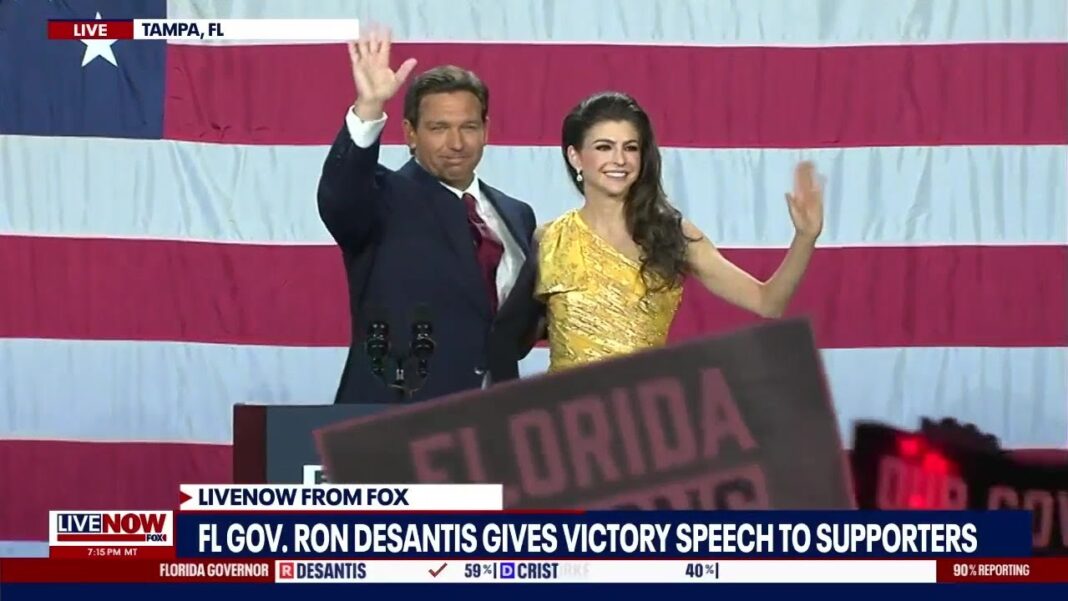Though the midterm 2022 results are not finalized, one thing is becoming apparent. The “big” Red Wave did not materialize though the Republicans look to be somewhat successful. Listen to Sen. (R) Graham’s thoughts on the night of the midterms below.
Thoughts are already coming to analyzing the results to see if any lessons learned can be gleaned. There will be plenty of time to examine exit polls, but our first thought is to look at some basic facts and ask the question: What makes a Red State Red and a Blue State Blue?
Aside from any election integrity issues, media manipulations, or specific state-target political campaigning, let’s take a look in the table below at more fundamental data by state. From the outline of the state Senate races in the 2022 midterm election, we wanted to look at a group of states identified as Red (or leaning Red) and Blue (or leaning Blue) from a relatively similar geographic area. Consider the following.
Population by state – source data.
- Red states: Iowa (3.2m), Missouri (6.1m), Kentucky (4.5m), Ohio (11.8m), and Indiana (6.8m)
- Blue states: Illinois (12.8m), Pennsylvania (13m), Georgia (10.9m), and Michigan (10.1m)
- Note: Blue states tend to be more populated than Red.
Population density by state – source data.
- Red states: Iowa (58), Missouri (90), Kentucky (115), Ohio (290), and Indiana (191)
- Blue states: Illinois (231), Pennsylvania (292), Georgia (190), and Michigan (179)
- Note: Blue states tend to be more densely populated than Red.
Urbanization percentage – source data.
- Red states: Iowa (64%), Missouri (70.4%), Kentucky (58.4%), Ohio (77.9%), and Indiana (72.4%)
- Blue states: Illinois (88.5%), Pennsylvania (78.7%), Georgia (75.1%), and Michigan (74.6%)
- Note: Blue states tend to have more urban areas than Red.
Age demographics – source data.
- Red states: Iowa (38.3), Missouri (38.7), Kentucky (39), Ohio (39.5), and Indiana (37.8)
- Blue states: Illinois (38.3), Pennsylvania (40.9), Georgia (36.9), and Michigan (39.8)
- Note: Little statistical differences.
Union affiliation – source data.
- Red states: Iowa (6.5%), Missouri (9%), Kentucky (7.2%), Ohio (12%), and Indiana (9%)
- Blue states: Illinois (13.9%), Pennsylvania (12.9%), Georgia (4.8%), and Michigan (13.3%)
- Note: Blue states tend to have more unionized than Red.
Percentage of registered voters / voter turnout by state – source data.
- Red states: Iowa (68%/76%), Missouri (70%/75.7%), Kentucky (78%/75.9%), Ohio (65.5%/77%), and Indiana (69.4%/70%)
- Blue states: Illinois (68%/74%), Pennsylvania (66.7%/76%), Georgia (64%/71%), and Michigan (80%/73.8%)
- Note: Little statistical differences.
Voting by party affiliation (Democrat/Republican) by state – source data.
- Red states: Iowa (41%/40%), Missouri (41/42%), Kentucky (43%/44%), Ohio (40%/42%), and Indiana (37%/42%)
- Blue states: Illinois (48%/33%), Pennsylvania (46%/39%), Georgia (41%/41%), and Michigan (47%/34%)
- Note: Voting by party affiliation favors Blue states.
Violent crime rates – source data.
- Red states: Iowa (303.49), Missouri (542.71), Kentucky (259.09), Ohio (308.76), and Indiana (357.68)
- Blue states: Illinois (425.91), Pennsylvania (389.52), Georgia (400.09), and Michigan (478.01)
- Commentary: Blue states tend to have higher crime rates.
- Note: Blue states tend to have higher crime rates than Red.
Drug overdose rates – source data.
- Red states: Iowa (14.3), Missouri (32.1), Kentucky (49.2), Ohio (47.2), and Indiana (36.7)
- Blue states: Illinois (28.1), Pennsylvania (42.4), Georgia (18), and Michigan (28.6)
- Note: Too much data dispersion, though Red states have a slightly higher drug overdose problem.
Median household income – source data.
- Red states: Iowa ($61.8), Missouri ($57.3), Kentucky ($52.2), Ohio ($58.1), and Indiana ($58.2)
- Blue states: Illinois ($68.4), Pennsylvania ($63.6), Georgia ($61.2), and Michigan ($59.2)
- Note: Blue states tend to have higher incomes than Red.
Cost of living – source data.
- Red states: Iowa (89.9), Missouri (89.8), Kentucky (93.1), Ohio (91.3), and Indiana (90.6)
- Blue states: Illinois (94.3), Pennsylvania (102.5), Georgia (88.8), and Michigan (91.3)
- Note: Blue states tend to have a higher cost of living than Red.
Quality of life (lower number is considered better) – source data.
- Red states: Iowa (12), Missouri (28), Kentucky (41), Ohio (36), and Indiana (32)
- Blue states: Illinois (30), Pennsylvania (40), Georgia (18), and Michigan (38)
- Note: Little statistical differences with too much dispersion.
Whitest by race states – source data.
- Red states: Iowa (89.9%), Missouri (83.7%), Kentucky (87.3%), Ohio (82.5), and Indiana (83.5%)
- Blue states: Illinois (73.1%), Pennsylvania (80.1%), Georgia (58.2%), and Michigan (79.9%)
- Note: Red states tend to have a higher white racial component than Blue.
Education ranking (a low number is considered better) – source data.
- Red states: Iowa (18), Missouri (30), Kentucky (36), Ohio (31), and Indiana (22)
- Blue states: Illinois (11), Pennsylvania (37), Georgia (25), and Michigan (38)
- Note: Little statistical differences, though a slight advantage, are seen in Red states.
Higher education ranking (a low number is considered better) – source data.
- Red states: Iowa (92.5%), Missouri (90.6%), Kentucky (87.2%), Ohio (90.78), and Indiana (89.3%)
- Blue states: Illinois (89.6%), Pennsylvania (90.1%), Georgia (87.9%), and Michigan (91.3%)
- Note: Little statistical differences, despite many myths told in the media.
Cost per student by state – source data.
- Red states: Iowa ($11.3k), Missouri ($10.4k), Kentucky ($10k), Ohio ($12.8k), and Indiana ($12.3k)
- Blue states: Illinois ($12.5k), Pennsylvania ($15k), Georgia ($10.8k), and Michigan ($12k)
- Note: Little statistical differences, especially if one would account for the living costs of the state.
Religion by state (percent identifying as very religious) – source data.
- Red states: Iowa (43%), Missouri (44%), Kentucky (49%), Ohio (41%), and Indiana (46%)
- Blue states: Illinois (39%), Pennsylvania (41%), Georgia (52%), and Michigan (41%)
- Note: Red states tend to be more religious than Blue.
Percent of babies born to unmarried mothers – source data.
- Red states: Iowa (36.3%), Missouri (41.1%), Kentucky (43.1%), Ohio (43.6%), and Indiana (43.6)
- Blue states: Illinois (40.5%), Pennsylvania (40.9%), Georgia (46.3%), and Michigan (41.2%)
- Note: Little statistical differences.
Corruption ranking (a low number is considered worse) by states – source data.
- Red states: Iowa (33), Missouri (18), Kentucky (15), Ohio (7), and Indiana (22)
- Blue states: Illinois (3), Pennsylvania (5), Georgia (12), and Michigan (14)
- Note: Blue states tend to have higher corruption rates than Red.
What is interesting about this data is often the data points that are not factors. One may need to dig deeper into county data, though it needs to be understood that county data needs to be rolled up to a state level in any case when considering state races and the presidential race in the Electoral College. Below is what one could say from these state data points.
- Blue states are more populated, urbanized, and have a higher population density.
- Blue states tend to be more corrupt, less religious, and have more crime.
- Blue states have a higher amount of minorities.
- Blue states have a higher unionization of their labor force.
- Blue states have higher median wages but also higher costs of living.
- Blue states have the advantage of party affiliation in historical voting trends.
Factoring out certain unchangeable demographic factors, one has to take note of the factors that point to the moral question that comes to light in understanding the characteristics of voters in Blue states (i.e., more corrupt, less religious, and more crime). Or perhaps none of these factors make any difference, and it simply boils down to the individual candidate and the campaign they run.
As the Republicans and conservatives begin to formulate any new political strategies and messaging going forward, it will be useful to keep these data points in mind. Some of these data points would be hard to change, others could be.
Give us your ideas in the comment section on why: A Red State is Red, and a Blue State is Blue?
By Tom Williams







